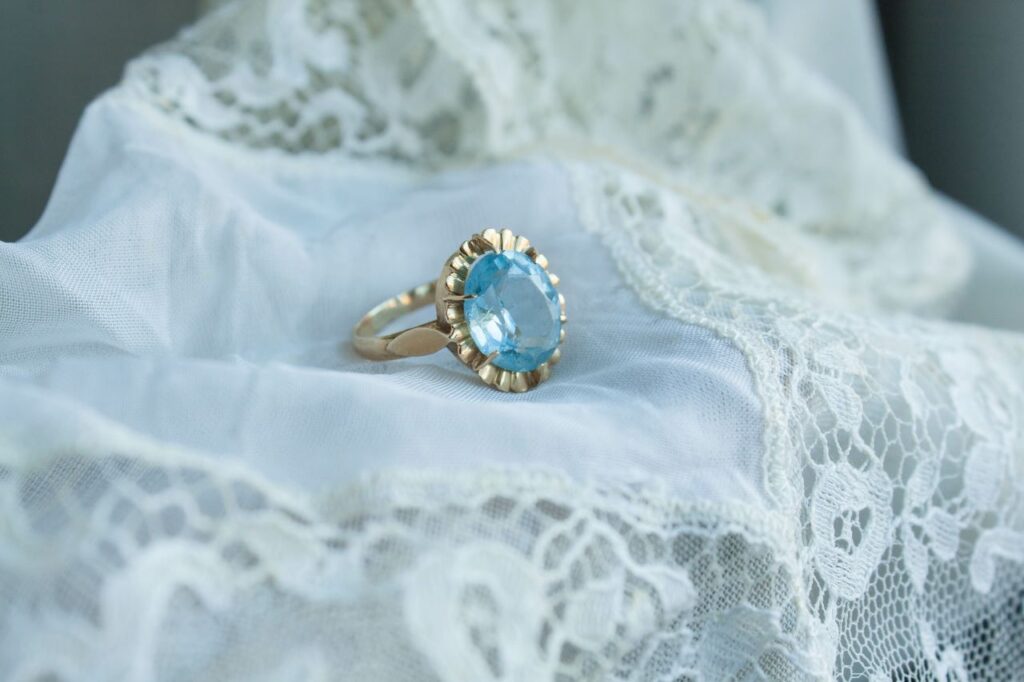When it comes to matters of the heart, some things never go out of style. One such timeless treasure is the vintage engagement ring. In a world where trends come and go, these exquisite pieces of history stand as enduring symbols of love and commitment. But there’s more to these rings than their timeless beauty; they also hold a special allure for couples seeking sustainable options.
When it’s time to go ring shopping, skip the mall and check out local antique stores, auction houses, and estate sales, and search online through sites that verify the quality and era of their vintage rings. You’ll find art deco beauties from the 1920s, solitaires from the 1950s or ornate filigree rings from the Victorian era. With some patience, you can uncover a one-of-a-kind vintage beauty that is perfect for your one-of-a-kind love.
In this article, we’ll delve into the allure of vintage engagement rings and why they remain a beloved choice for couples who appreciate both style and sustainability. So, whether you’re a history enthusiast or simply looking for a ring as unique as your love story, join us as we explore the world of vintage engagement rings.

The allure of vintage: Why antique rings never go out of style
There’s something undeniably romantic about antique and vintage engagement rings. Rings from past eras evoke a sense of timeless elegance and everlasting love. Here are a few reasons why a vintage engagement ring is always in style:
- History and sentiment. An antique ring comes with a built-in story. It has been cherished before, perhaps for generations, and carries the sentiment of previous unions and everlasting devotion. For the nostalgic or sentimental bride, a vintage ring offers an emotional connection to the past.
- Timeless beauty. Vintage rings are typically made in classic styles that stand the test of time. Delicate filigree details, halo settings, and embellished bands are all hallmarks of rings from past eras that remain stunning today and are not typically found in today’s modern designs, which makes them unique.
- Superior craftsmanship. Rings from the early 20th century and before were painstakingly handcrafted, often with intricate details. They feature solid gold or platinum and high-quality gemstones, cut for maximum sparkle and set securely in sturdy prong or bezel settings. Vintage rings are built to last a lifetime.
- Conversation starter. A one-of-a-kind vintage engagement ring with a bit of history is an instant conversation starter. Friends and family will be enchanted hearing how it was discovered and imagining all the hands it has passed through.
Finding your dream vintage engagement ring: What to look for
Finding a vintage wedding ring that speaks to your heart can take time and patience. But when you find the one, you’ll know. Here are some tips to help guide your search:
- Look for quality and timeless designs. Vintage rings from the 1920s to 1950s showcase intricate filigree details, milgrain edging, and geometric shapes that still look stylish today. Rings from the Edwardian era (1900-1920) often feature delicate lace-like patterns. These high-quality rings were made to last and become family heirlooms passed down through generations.
- Consider the diamond cut. Round brilliant, Asscher, emerald and Old European cuts were popular in vintage rings. Round brilliant and Asscher cuts provide lots of sparkle. Emerald cuts have a vintage look but may appear smaller. Old European cuts are rare and prized by collectors.
- Choose platinum or gold. Platinum was popular in the early 1900s and is extremely durable. Gold rings in 10K, 14K, or 18K are also common.
- Look for hallmarks. Hallmarks indicate the gold content and can date the ring. Typical hallmarks include “PT” or “Plat” for platinum, “10K”, “14K” or “18K” for gold, and a date mark like “1920”. Hallmarks provide provenance and can increase a ring’s value.
- Consider having the ring resized. Vintage rings can often be resized to fit your finger while maintaining their original charm and detailing. Work with a jeweller experienced in resizing delicate vintage rings.

Customizing a vintage engagement ring: Repurposing stones and settings
Vintage engagement rings are timeless treasures, but that doesn’t mean you can’t make them your own. Repurposing stones or settings is a great way to customize a vintage ring and create an heirloom that matches your style and personality and will be cherished for generations.
Resetting stones
The center stone is the focal point of any ring. If the setting of your vintage engagement ring doesn’t suit your style, consider resetting the stone. Work with a jeweller to create a custom setting in a metal you prefer, like gold or platinum. They can also modify the stone’s shape by recutting it to modern standards for extra sparkle.
Resetting the stone allows you to keep its sentimental value while designing a ring that reflects your unique taste. The jeweller can incorporate additional accent stones or filigree details to complement the center stone’s new setting.
Repurposing settings
On the other hand, you may love the setting of your vintage ring but want to replace the center stone. The jeweller can source a stone that matches your size, cut, clarity and colour preferences. They will ensure the new stone is securely set within the vintage mounting.
Repurposing an heirloom setting is a meaningful way to honour your family’s history while upgrading to a stone you genuinely cherish. The jeweller can also modify the setting by resizing or reshaping it to better suit your hand.
With some customization, a vintage engagement ring can become an emblem of your love story. Resetting stones or repurposing settings are creative ways to craft a ring that embodies the beauty of the past and the promise of the future. An heirloom engagement ring, reimagined just for you, is the most romantic gift of all.









Leave a Reply